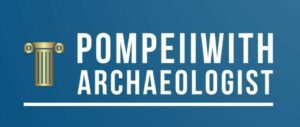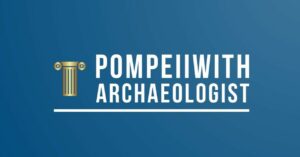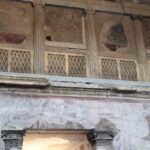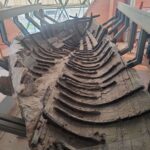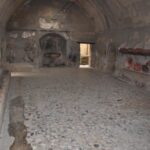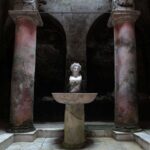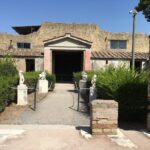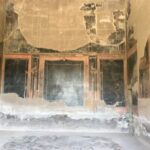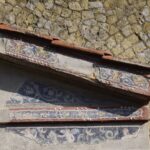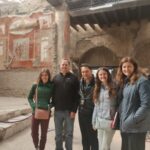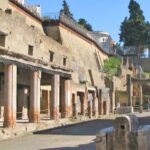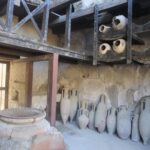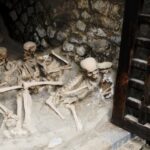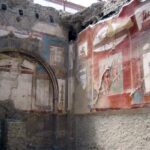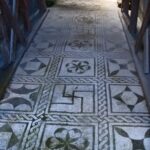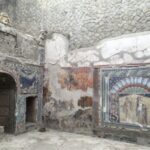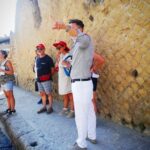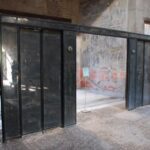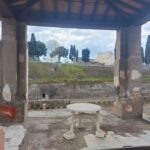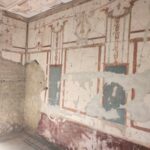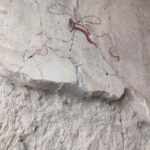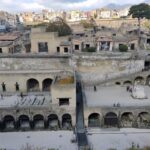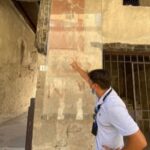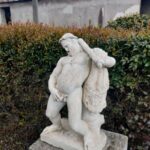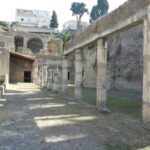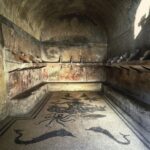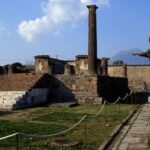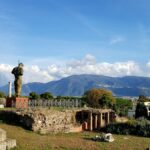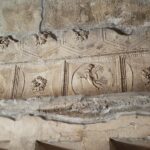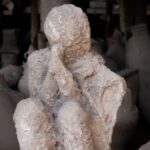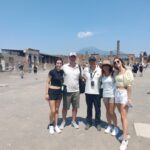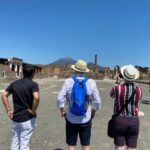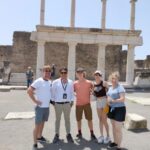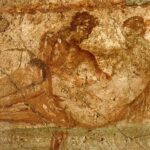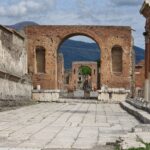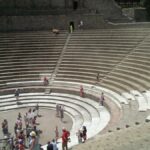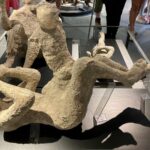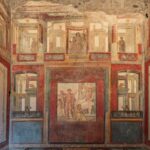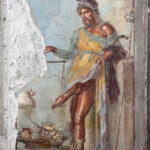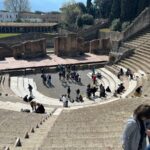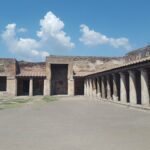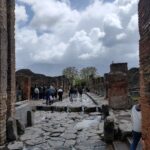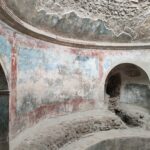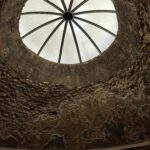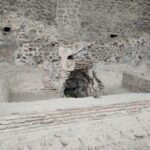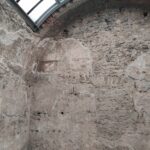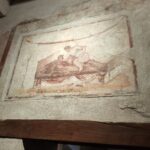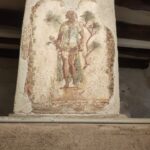Pompeii and herculaneum walking tour
Walking tour in Pompei and Herculaneum, two of the most famous archeological roman sites
Being an archaeologist, I excavated a house in Pompeii with my university professor. An incredible experience that I will always carry with me. Pompeii for me is simply a magical place that will leave you with an unforgettable memory of how a Roman city was made in all its public, private, civil, and religious aspects.
Pompeii was an ancient Roman city located near modern Naples in Italy. Its history dates back to around the 7th century BC when it was founded by the Oscans, an Italic tribe. Initially, it was a small agricultural community, but it grew over time into a prosperous and bustling city, largely due to its strategic location near the Bay of Naples and its fertile volcanic soil.
The history of Pompeii:
-
Greek Influence: Before becoming a Roman city, Pompeii was influenced by Greek culture, as were many other cities in the region. The Greeks established trading posts in southern Italy, including Pompeii, which contributed to the city’s cultural development.
-
Roman Conquest: In the 5th century BC, Pompeii came under the control of the Samnites, another Italic tribe. However, by the 4rd century BC, it was absorbed into the expanding Roman Republic during the Samnite Wars. Under Roman rule, Pompeii flourished as a commercial and trading hub.
-
Prosperity and Urban Development: During the 1st century BC, Pompeii experienced a period of significant growth and prosperity. The city expanded, and many public buildings, temples, theaters, and lavish villas were constructed. Pompeii became a vibrant center of commerce, art, and culture.
-
Mount Vesuvius Eruption: One of the most significant events in Pompeii’s history occurred on August 24, 79 AD, when Mount Vesuvius, the nearby volcano, erupted catastrophically. The eruption buried Pompeii and several other nearby towns under a thick layer of volcanic ash and pumice, preserving them remarkably well for centuries.
-
Rediscovery: Pompeii remained buried and largely forgotten for centuries until its rediscovery in the 18th century. Excavations began in the mid-18th century and have continued to the present day, revealing invaluable insights into daily life in ancient Rome.
-
Archaeological Site: Today, Pompeii is an archaeological site of immense historical and cultural significance. It attracts millions of visitors each year who come to explore its remarkably preserved ruins, streets, buildings, and artifacts. Pompeii provides a fascinating glimpse into the daily life, architecture, art, and society of ancient Rome.
Overall, Pompeii’s history is a tale of prosperity, destruction, and rediscovery, offering a unique window into the ancient world.
– Herculaneum was an ancient Roman town located in the shadow of Mount Vesuvius, near present-day Naples in Italy. The history of Herculaneum is closely intertwined with the catastrophic eruption of Mount Vesuvius in 79 AD. Here’s an overview of its history:
-
Foundation and Early History: Herculaneum was founded by Greek colonists around the 7th century BC as a small coastal settlement known as Heraklion. Over time, it grew into a prosperous town, benefiting from its strategic location along trade routes and its fertile agricultural land.
-
Roman Period: In the 4st century BC, Herculaneum came under Roman control during the expansion of the Roman Republic. Under Roman rule, the town flourished as a resort destination for wealthy Romans, who built luxurious villas along the coast. Herculaneum became known for its opulent architecture, beautiful frescoes, and vibrant social life.
-
Mount Vesuvius Eruption: On August 24, 79 AD, Mount Vesuvius erupted catastrophically, burying Herculaneum and several other nearby towns, including Pompeii, under a thick layer of volcanic ash and debris. The eruption preserved the town remarkably well, providing invaluable insights into daily life in ancient Rome.
-
Rediscovery and Excavation: Like Pompeii, Herculaneum remained buried and largely forgotten for centuries after the eruption. Its rediscovery began in the 1710, when a farmer, digging a well in his land to find water, instead found the marble floor of the Roman theater stage. Excavations have been ongoing since then, revealing a wealth of archaeological treasures, including well-preserved buildings, artifacts, and skeletal remains.
-
Archaeological Site: Today, Herculaneum is an important archaeological site and UNESCO World Heritage Site. Visitors can explore the remarkably preserved ruins of the ancient town, including its streets, houses, public buildings, and even organic remains such as wooden furniture and foodstuffs preserved by the volcanic ash.
-
Insights into Ancient Life: The excavations at Herculaneum have provided scholars with invaluable insights into various aspects of ancient Roman life, including architecture, urban planning, social structure, economy, and daily routines. The well-preserved state of the town has made it a crucial site for understanding the Roman world and its inhabitants.
Overall, the history of Herculaneum is a testament to the power of nature and the resilience of human civilization. The town’s tragic fate and subsequent excavation have enriched our understanding of ancient history and continue to captivate visitors from around the world.
It will be a pleasure for me, as an archaeologist expert, to explain to you the most important works.
MEETING POINT + TOUR DURATION
Meeting Point Options: At the ticket office of Pompeii called “Porta Marina Superiore”. After Pompeii we are seeing us outside the gate of Herculaneum
Duration: 6 hours
1 hour is generally for the lunch.
ITINERARY
•The tour in Pompei lasts about 2 hours. During the guided tour we’ll visit:
– The big theatre
– The small theatre
– A bakery shop
– the house of the Menander
– the main street named Abbondanza street
– A roman fast food
– The Stabian bathhouse
– The brothel
– The main square
– The plastercasts of the victims
• Afterward we’ll go to Herculaneum, here the tour lasts about 2 hours. During the guided tour we’ll visit:
– The ancient beach
– The scheletons
– The house of the dears
– A roman fast food
– The house of the wodden partition
– The Samnite House
– The public bathhouse
– The house of Neptune and Amphitrite
– The decumanus maximus
– The house of the bicentenary
– The guild of the Augustales
*This tour can be customized
WHAT’S INCLUDED
- Guiding Service
ESTIMATED LOCAL CASH NEEDED
18 € – admission fees to enter in the ruins of Pompei,
16 € – admission fees to enter in the ruins of Herculaneum; prices are per person.
Under 18 years old are free of charge.
WHAT’S EXTRA
- Meal
